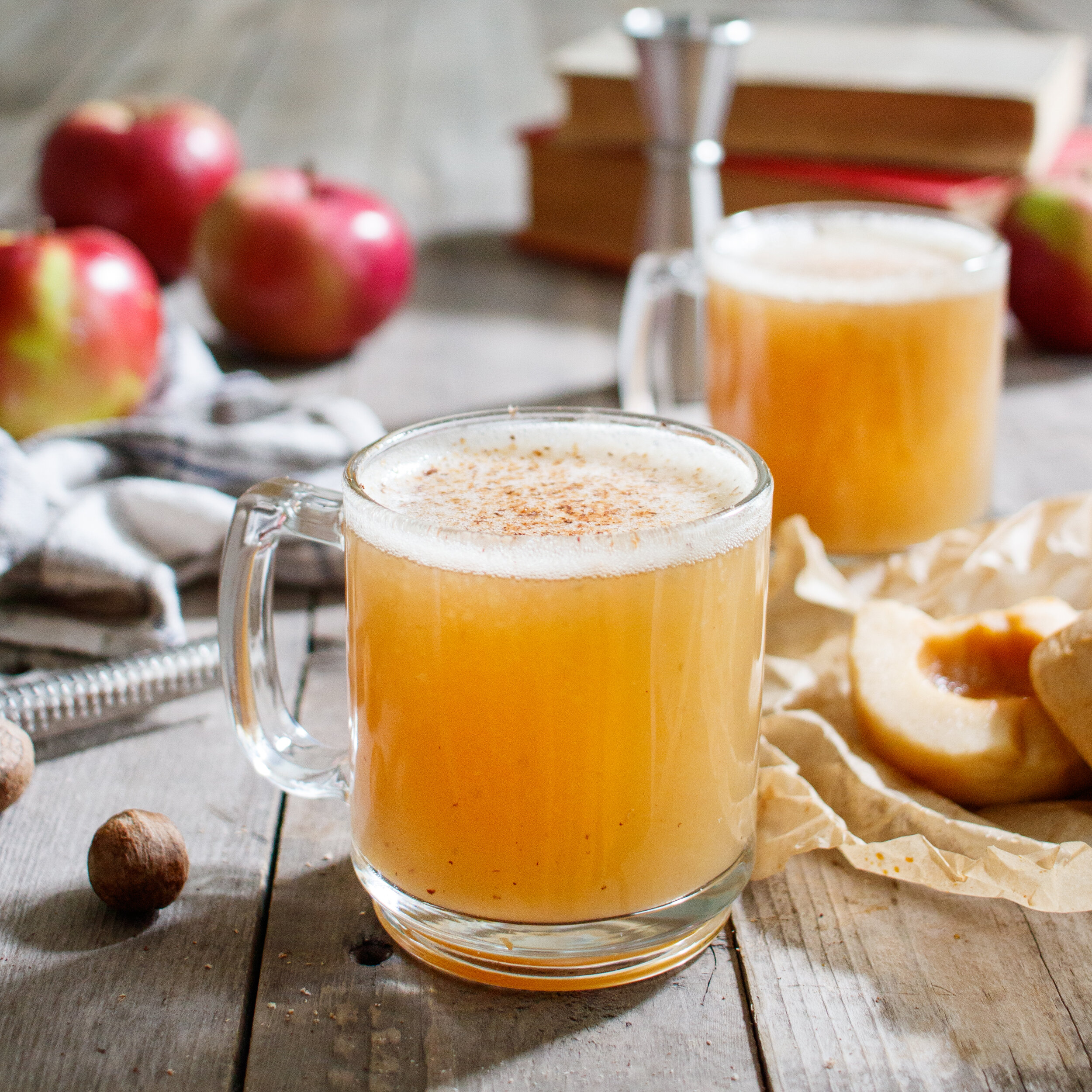Hot water
1 tablespoon sugar
½ baked apple *(see note)
2 oz apple brandy (blended applejack is best)
Freshly grated nutmeg
Rinse a mug with hot water to warm it, and dump the water out. Add the sugar, the 1/2 baked apple, and an ounce or two of hot water. Stir to dissolve the sugar and mash up the apple as well as possible. I used an immersion blender to get it really smooth. Add the apple brandy and stir to combine. Top off with more hot water and finish with freshly grated nutmeg.
*Notes:
If you don’t want to bake your own apple you could substitute about 1/3 of a cup of unsweetened apple sauce instead.
To make the baked apple:
Preheat oven to 350. Peel & core a small sweet soft apple, & slice in half. Wrap in a parchment on a sheet pan, or place in a lidded dish, and bake for 30 to 45 minutes until soft.
In the 1700s, the apple toddy was considered a real treat in cold weather, especially around the holidays. It didn’t matter if you were a poor farmer, a soldier, a politician, or a wealthy landowner; this drink was popular across the social scale. It was also popular for a very long time; from before the revolution all the way up to prohibition. Mentions of the apple toddy appear in print a bunch of times in both the 1700s & 1800s. Unfortunately, like a lot of pre-prohibition classics, it never found its way back after prohibition was repealed, but it’s delicious and definitely deserves a comeback.
One caveat is that the apple needs to be mashed very well so it isn’t chunky in the drink. I’m not sure how they would have done this in the 1700s, but I used an immersion blender to get mine as smooth as possible. Some people recommend straining the drink before serving but I think as long as the apple is very finely blended into the drink, straining isn’t necessary.



